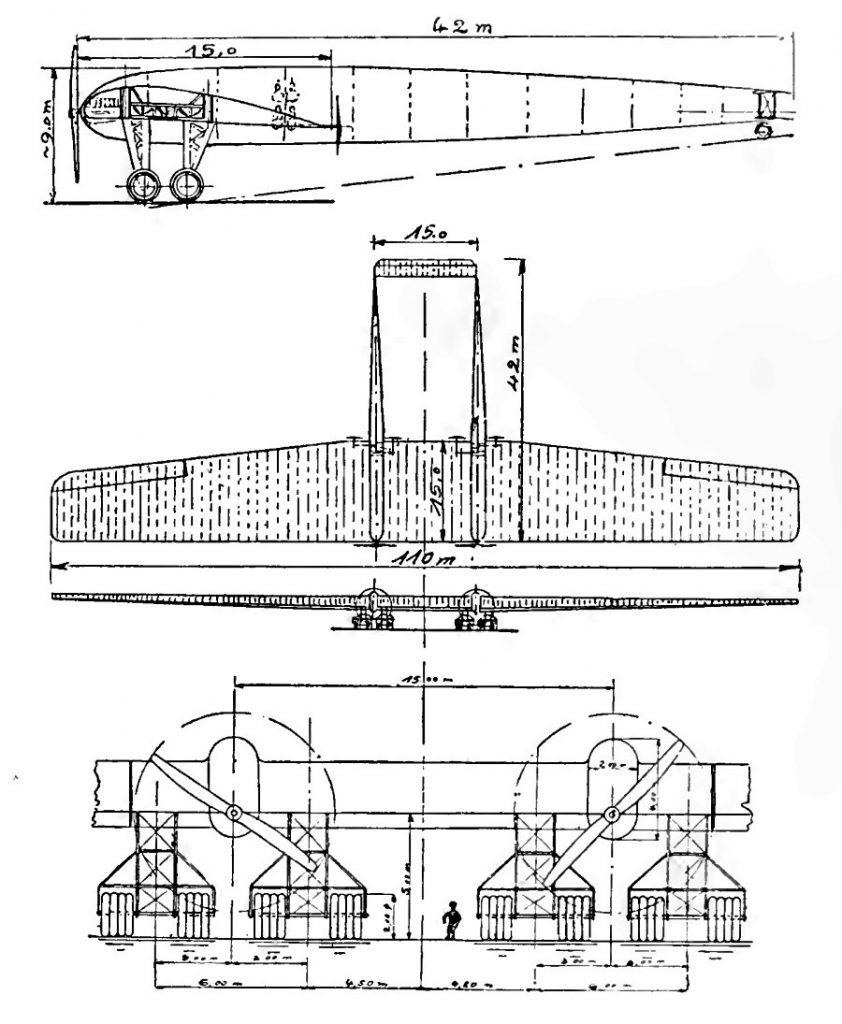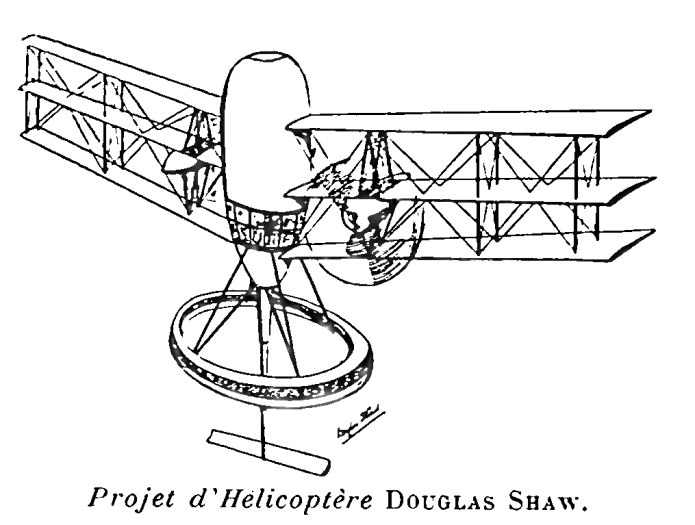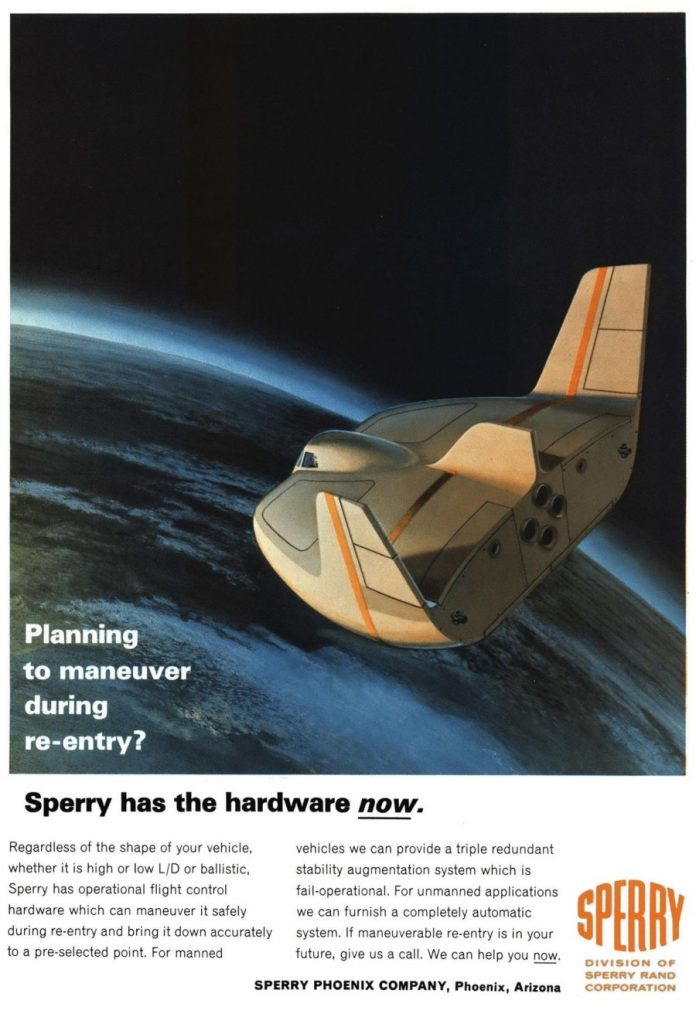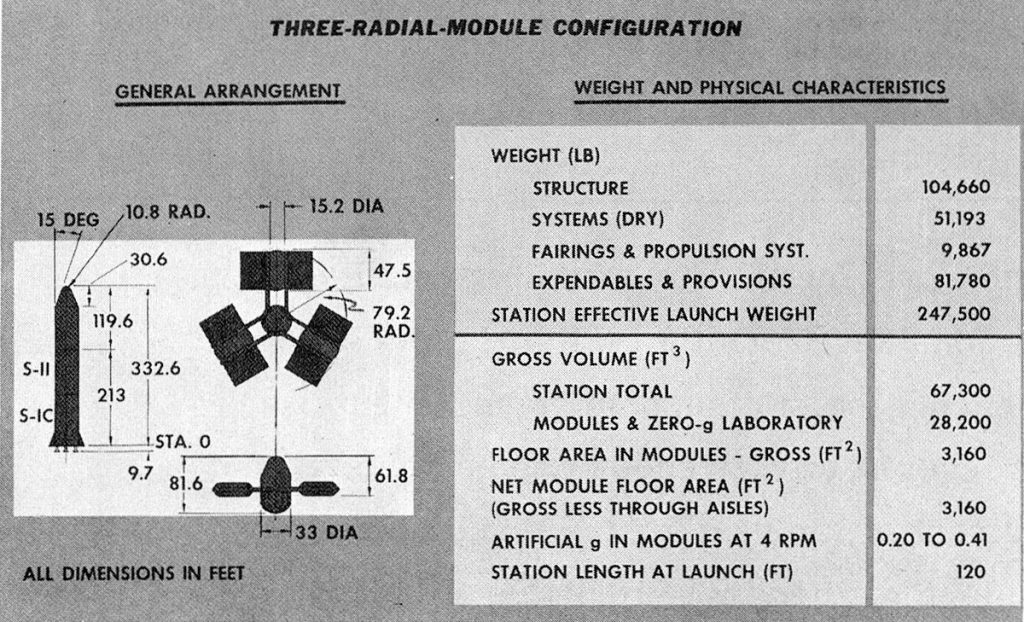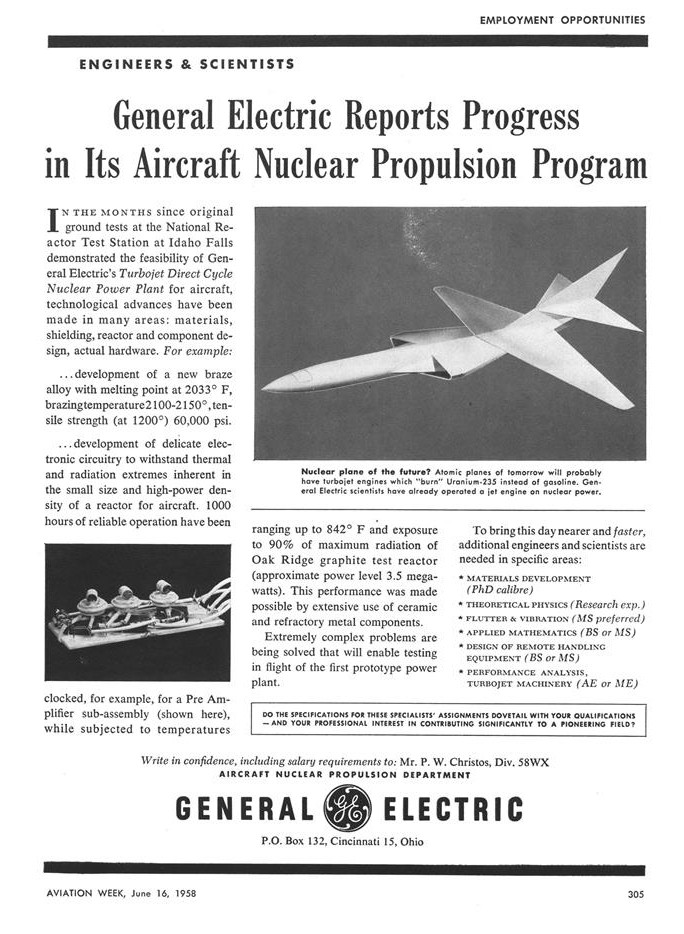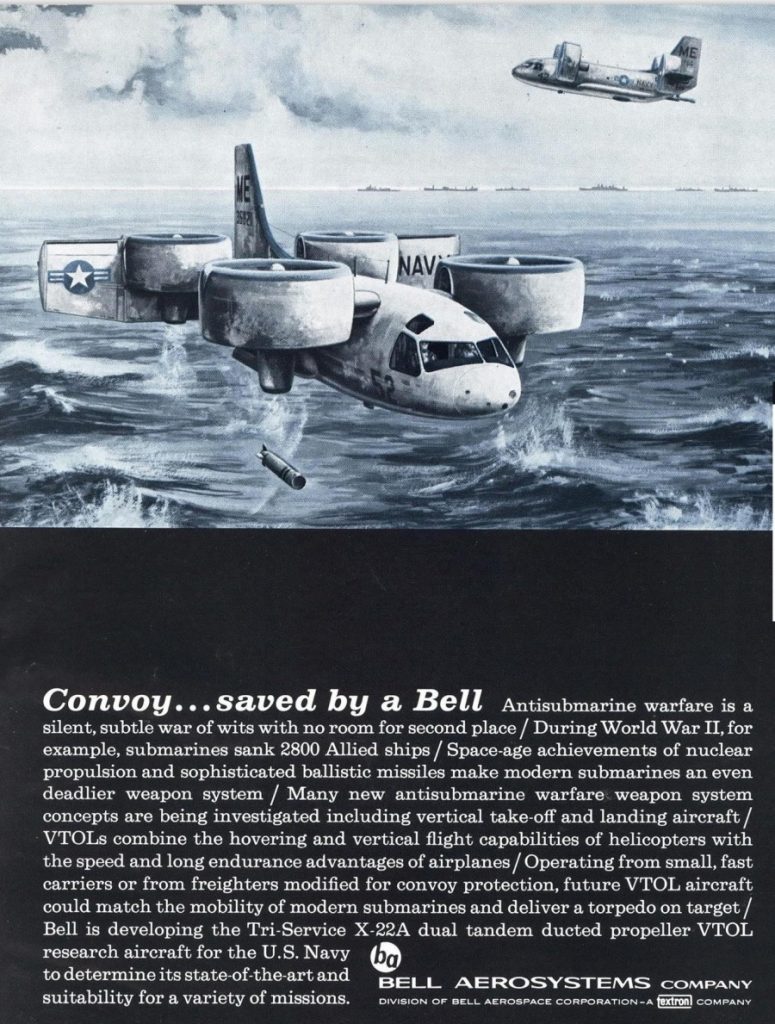The Internet Archive has a *lot* of stuff. One thing there is a scan of the French-language aeronautical magazine “L’Aeronautique” covering 1919-1921. It is available in a number of formats, including PDF, here:
https://archive.org/details/la02b9eronautiqu03pari/page/n2
Included in this is a design for a truly gigantic aircraft with a wingspan of 110 meters, produced by Professor Junkers, presumably Hugo Junkers of Junkers Flugzeug- und Motorenwerke AG.Hugo was an innovator in the field of all-metal aircraft construction, including the first practical all-metal aircraft the Junkers J 1 from 1915. The giant aircraft would have a wing area of 1,400 square meters and a gross weight of 60 tonnes; 12 engines would produce 4,000 horsepower and drive six propellers. Two tractor props would have a diameter of 6 meters, while four pusher props would have a diameter of 3.7 meters. No performance data seems to be given, but it can be assumed that it was meant to be a long range passenger or cargo transport.
Support the APR Patreon to help bring more of this sort of thing to light! Alternatively, you can support through the APR Monthly Historical Documents Program.
Bonus: A helicopter design from one Douglas Shaw. This would have failed entertainingly.
